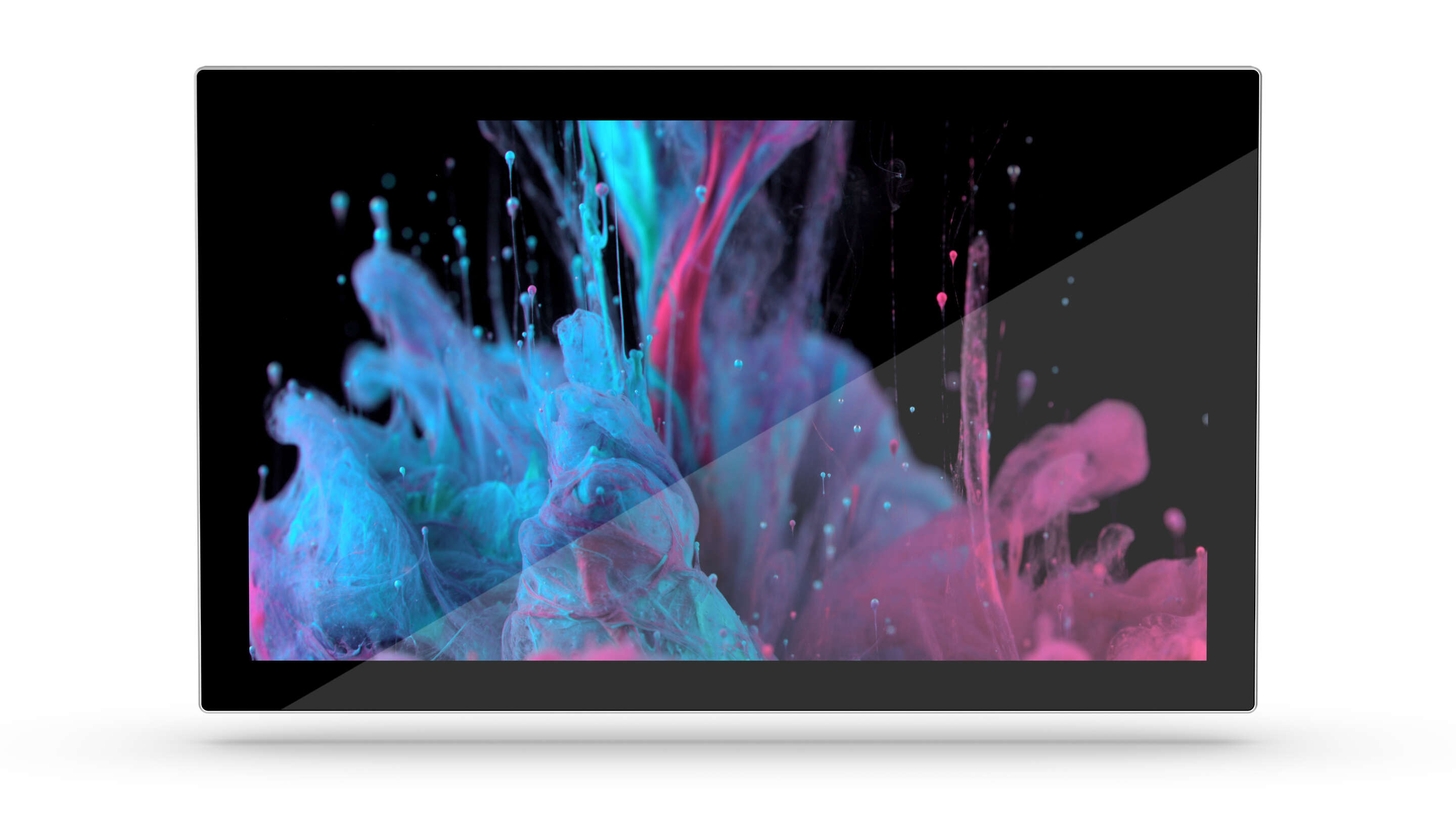High-quality touch display integration
The use of the optical bonding process is not a new lamination and assembly process, as it has been used in military technology for displays of on-board instruments for more than 30 years.
The optical bonding process is an adhesive technique with which the optical components of a touch display are bonded together under cleanroom conditions by means of transparent liquid bonding. However, this manufacturing technology is not a simple assembly process but requires many years of experience, suitable production facilities and comprehensive material know-how.
Interelectronix is a specialist in the integration of Open Frame Touch Display with many years of experience and has highly qualified personnel as well as production facilities in the field of optical bonding.
Advantages of optical bonding in touch display integration
The optical bonding method is preferred for
- the combination of a protective glass with a touch screen, and
- the integration of a display with a touchscreen to an open frame touch display
for use. In both areas of application, the air gap between the components is filled with high-quality, index-adapted adhesives.
The complete encapsulation of the gaps as well as the use of application-specific and highly transparent adhesives has clear advantages over the conventional design or integration of an open frame touch display.
Less reflection – better sunlight readability
Due to the complete encapsulation of the gaps, the internal refraction of light is reduced and at the same time the contrast is increased. This results in significantly improved optical performance in moderate daylight conditions as well as significantly improved readability in strong sunlight.
In the best case, sunlight readability can be improved by up to 400% compared to non-bonded touch displays. Production in a clean room prevents the inclusion of dust particles and the resulting optical interference.
High brilliance
Lower optical losses lead to a higher contrast ratio and a significantly greater light output due to index-adapted adhesives. The associated advantage, e.g. for outdoor applications, is an excellent brilliance, which is achieved in conjunction with bright LED backlight displays.
Lower power consumption
As a result, better readability even in low light conditions, combined with stronger contrast, the touch displays can be operated with lower power consumption and better optical performance.
Improved heat dissipation
By pouring out the insulating air gap between the glass panes, heat can be dissipated through the windshield to the outside, which in the best case leads to up to 8 times improved heat dissipation.
No condensation – no dust formation
Since there is no air gap between the protective glass .dem and the touchscreen or touchscreen and the display after the use of optical bonding, neither moisture nor dust can penetrate, which prevents condensation or contamination. The result is a high-quality touch display with high brilliance and excellent optical results.
Greater robustness - vandalism-proof
A bonded touch display is considerably more resistant to mechanical stress and vandalism as well as vibrations, which is why it is preferred for use in the military, transportation, shipping and handhelds. Bonding makes the application more robust overall, better protected against vandalism and makes it suitable for use in a harsh working environment.
Thinner touch display design
The trend with touch displays is clearly towards the thinnest possible design of the application.
This development comes from the consumer sector and is increasingly being demanded by customers in kiosk applications, handhelds, industrial monitors and medical technology. The use of optical bonding is one of several design methods to reduce the height of the touch display while improving robustness and image brilliance.
Our expertise with optical bonding is your advantage!
The challenge with the optical bonding process is to bond glass surfaces together without air pockets, contamination by dust particles and optical defects such as scratches or moiré effects.
Only if the casting of the air gaps is 100% without optical defects, the advantages shown above are effective and a high-quality touch display is created. For this reason, optical bonding is still a very demanding manufacturing process that requires many years of experience, trained personnel and high demands on the production process, the clean rooms and the technical equipment of the production facilities and working environment.
In the production of touchscreens as well as in the integration of open frame touch displays, extensive material know-how with regard to adhesives is also mandatory. Different locations and environmental conditions place very specific demands on the material properties of adhesives, which is why the adhesive used must be precisely tailored to the specific requirements. For example, not every adhesive is suitable for use in extreme cold or heat, is shock-resistant or can withstand UV radiation permanently.
Interelectronix offers various optical bonding processes in its in-house production, in which both silicone and urethane-based adhesives can be encapsulated.
The advantages of each group of materials are:
Silicone-based adhesives
- provide increased shock absorption and
- are more resistant to yellowing.
Urethane-based adhesives
- are more resistant to UV radiation
- and allow for a sturdier, stiffer construction.
We offer the following frame-protective glass bonding options:
- In-frame bonding
- On-frame bonding
- Over-frame bonding
